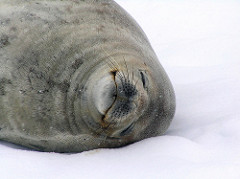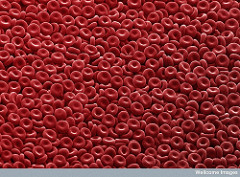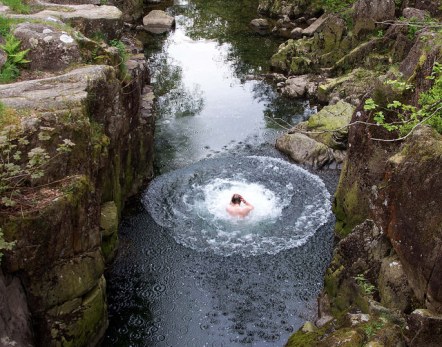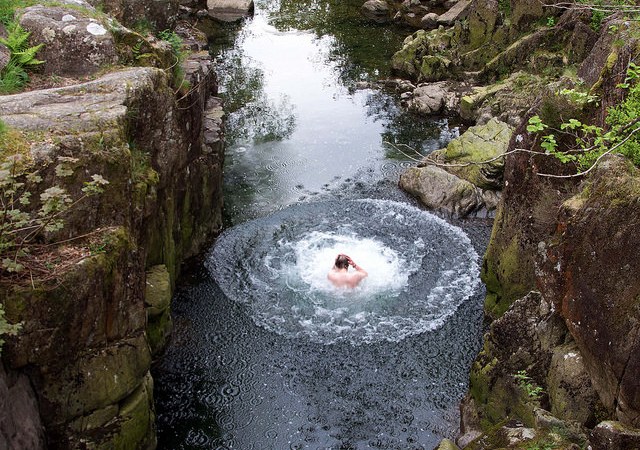I am currently taking a course named ‘Extreme Physiology’ and so far, it is certainly everything it has claimed to be! One of our early practicals studied a phenomenon termed the “Diving Response” – one physiological tool that many animals, including humans, automatically call upon to get out of difficult situations involving cold, water and with no opportunities to breath. Scroll down to explore the Diving Reflex and some of its added benefits!
Diving mammals and birds possess many physiological adaptations that aid their survival in hostile hypoxic environments, including an ability to take larger breaths, an ability to store more oxygen in their blood and muscles (increased blood volume and myoglobin) and an ability to slow the consumption of oxygen by their bodies (reduced metabolic rate) (1).
One profound physiological tool these animals utilise when submerged in cold water is the Diving Response (DR). The DR was first studied by Bert in 1870, who found that the heart rate of ducks could reduce from 100 to 14 beats during submersion (2). It occurs in other species too – the Weddel seal has been reported to be able to reduce its heart rate by 80%, yet can maintain a ‘normal’ blood pressure of 120mmHg (3). This response has subsequently been shown to exist in varying degrees in many (if not all) mammals tested! (1)

This response was once called the Diving Reflex, however, its effects are thought to be brought by a number of reflexes occurring simultaneously and is now termed the ‘Diving Response’ (4). It is stimulated by exposure to water and with breath holding, and is especially stimulated by the sensation of cold on the face (5). The physiological effects comprise bradycardia, restriction of splanchnic and muscular circulations, promotion of blood flow to the brain and an increase in blood pressure (6). This integration of cardiovascular, respiratory and neurological responses is suggested to allow the animal to preserve its valuable oxygen stores.
MECHANISMS OF OXYGEN CONSERVATION:
Bradycardia: The heart beats fewer times a minute, reducing the amount of work the heart must do. Reduced work equals reduced oxygen consumption, allowing longer breath holding times.
Restriction of blood flow: Peripheral vasoconstriction prevents unnecessary perfusion to the skin (7). When breathholding, communication from the sympathetic nervous system to the muscles in blood vessels increases, causing narrowing of these arteries and veins (8,9). Diverting blood away from the arms and legs means the muscles in these areas cannot access the oxygen stored in the blood, acting as another mechanism to preserve oxygen.
Increased blood pressure: The effects of the sympathetic nervous system on the muscles in the vessels increases ‘peripheral resistance’ and blood flow (10). Shifting blood from the peripheries means it is pushed towards the centre – increasing the amount of blood taken back to the heart via the veins (venous return), which means more blood can enter the heart (increasing preload). It also means more blood is pushed towards essential organs.
Increased blood flow to the brain: Despite the widespread peripheral vasoconstriction, the flow of blood in the carotid arteries (the arteries taking blood through the neck to the brain) is increased to maintain cerebral perfusion (11).
Slowed uptake of oxygen from the lungs: Oxygen uptake from the lungs into the blood is slowed. This slowing of uptake also acts to preserve a valuable oxygen store. This effects is seen when an individual holds their breath, however uptake is slowed further when paired with cold exposure (12).
Enough of the seals!
Wait! Humans also show the diving response:
Schagatay and Andersson (13) showed that when immersed in cold water, the ability to perform the diving response (greater reductions in heart rate and peripheral blood flow) was associated with individuals going for longer times without coming up for air.
The obvious carry over of the diving response is for those who work in water; trained breath holding divers decrease their oxygen consumption when immersed in cold water compared to only holding their breath in air (14). When testing voluntary breathing holding times, subjects who were immersed in cold water held their breaths for 14% longer (15).
ENOUGH with the physiology! I am not a breath-hold diver! This isn’t interesting!
One aspect of the diving response that I haven’t mentioned is its effect on the spleen.
The spleen is an organ on the left side of the abdomen, tucked underneath the diaphragm. Its role is to filter and store red blood cells (that carry oxygen), removing old ones from the circulation and releasing new ones when needed. It has a central role in the immune system and is suggested to contain over half the body’s army of monocytes (cells that fight infection).

The diving response also induces contraction of the spleen. Does cold water immersion alter the number of blood cells in circulation?
Schagatay et al. (16) compared 10 healthy individuals against 10 individuals who had had their spleens removed. The individuals held their breaths for as long as possible while immersing their faces in cold (10 degree C) water. After repeating this 10 times, with 2 minute intervals between each repeat, those individuals with spleens responded with a 6.4% increase in haematocrit and 3.3% increase in haemoglobin concentration. This greater oxygen carrying capacity across the experiment translated to an increase in breath holding times of 17 seconds, or 30%. No changes to blood composition or breath holding times were seen in those individuals without spleens.
Bakovic et al. (17) performed a similar study comparing 18 experienced divers against 12 untrained normal individuals and 6 individuals without spleens. Subjects performed 5 maximal breath holds in cold water. In those individuals, untrained and trained, with spleens, both the number of red blood cells (RBC, oxygen carrying) and white blood cells (WBC, immune cells) increased. Trained divers showed greater responses for both types of cells, increasing RBCs by 5% and WBCs by 15%, while untrained individuals increased RBCs by around 2% and WBCs by 7%, respectively. Interestingly, the number of granulocytes continued to increase up to 60 minutes after the cold exposures, and this effect was more pronounced in trained divers.
Once again, those individuals without spleens showed no differences.
A different study by Bakovic (18) showed that out of five breath holds, the maximum duration was reached by the third attempt. This quick adaptation process was mirrored by the findings of ultrasound scans of the spleen, showing that the spleen reduced in size by 20% during the first apnoea. This rapid contraction allows a rapid increase in the human tolerance to hypoxia. Furthermore, the spleen did not return to its original size even after 60 minutes, suggesting continued increases in the red blood cell content of the blood.
The spleen also contracts during heavy exercise. When exercising at progressively increasing intensities, there was a proportional decrease in the number of red blood cells in the spleen. At maximum intensity, the total amount of RBCs stored in the spleen had decreased by 66%. This increased number of circulating RBCs was accompanied by an increase in haematocrit from 44.6 to 48 (19)

In summary:
Exercise utilises the splenic red blood cells to boost haematocrit and oxygen carrying capacity.
Quick exposures to cold immersion and apnoea (5 maximal breath holds) can rapidly increase the haematocrit of the blood.
Trained breath-hold divers show a greater ability to release red blood cells.
The increase in RBCs is associated with progressively better hypoxic tolerance.
The spleen also releases white blood cells – important effectors of the immune system.
I have named the mechanism of chronic cold-exposure to bolster splenic function “Splenic Adaptive Training”, or “SPLAT” for short.
Further research endeavours for SPLAT, in chronic and acute scenarios:
Can we use SPLAT to increase the reservoir of the spleen?
Can cold exposure be used pre-event to stimulate an increased haematocrit (cold-doping?) before the exercise-induced splenic contraction sets in?
Can cold and exercise be used synergistically to maximise splenic contraction?
Can SPLAT be used to boost immunity in intensely training athletes?
Images:
Weddel Seal from here. Red Blood Cells from here. Cold pool picture from here.
References:
- Andersen HT. Physiological adaptations in diving vertebrates. Physiol Rev. 1966;46(2).
- Bert P. Lecons sur la Physiologie Comparee de la Respiration. Paris J B Bailliere fils. 1870;544.
- Kooyman G. Zoophysiology. In: vol 23. Berlin.: Springer-Verlag; 1989. p. 201.
- Elsner. Robert, Gooden. Brett. Diving and Asphyxia: A Comparative Study of Animals and Man – Robert Elsner, Brett Gooden – Google Books [Internet]. Cambridge: Cambridge University Press. ; 1983 [cited 2017 Feb 11]. Available from: https://books.google.co.uk/books?hl=en&lr=&id=v708AAAAIAAJ&oi=fnd&pg=PR9&ots=vgxaAtJR4B&sig=LFMxlxhsUSgg20ouDUYEm-wd3o8&redir_esc=y#v=onepage&q&f=false
- Andersson JPA, Linér MH, Fredsted A, Schagatay EKA. Cardiovascular and respiratory responses to apneas with and without face immersion in exercising humans. J Appl Physiol [Internet]. 2003 Nov 14 [cited 2017 Feb 11];96(3):1005–10. Available from: http://www.ncbi.nlm.nih.gov/pubmed/14578373
- Panneton WM. The mammalian diving response: an enigmatic reflex to preserve life? Physiology (Bethesda) [Internet]. 2013 Sep [cited 2017 Jan 29];28(5):284–97. Available from: http://www.ncbi.nlm.nih.gov/pubmed/23997188
- Campbell LB, Gooden BA, Horowitz JD. Cardiovascular responses to partial and total immersion in man. J Physiol [Internet]. 1969 May 1 [cited 2017 Jan 28];202(1):239–50. Available from: http://doi.wiley.com/10.1113/jphysiol.1969.sp008807
- Fagius J, Sundlöf G. The diving response in man: effects on sympathetic activity in muscle and skin nerve fascicles. J Physiol [Internet]. 1986 Aug 1 [cited 2017 Jan 28];377(1):429–43. Available from: http://doi.wiley.com/10.1113/jphysiol.1986.sp016196
- Dujic Z, Ivancev V, Heusser K, Dzamonja G, Palada I, Valic Z, et al. Central chemoreflex sensitivity and sympathetic neural outflow in elite breath-hold divers. J Appl Physiol [Internet]. 2007 Nov 1 [cited 2017 Feb 11];104(1):205–11. Available from: http://www.ncbi.nlm.nih.gov/pubmed/17991789
- Leuenberger UA, Hardy JC, Herr MD, Gray KS, Sinoway LI. Hypoxia augments apnea-induced peripheral vasoconstriction in humans. J Appl Physiol [Internet]. 2001 Apr [cited 2017 Feb 11];90(4):1516–22. Available from: http://www.ncbi.nlm.nih.gov/pubmed/11247954
- Pan A-W, He J, Kinouchi Y, Yamaguchi H, Miyamoto H. Blood ¯ow in the carotid artery during breath-holding in relation to diving bradycardia.
- Andersson JPA, Biasoletto-Tjellström G, Schagatay EKA. Pulmonary gas exchange is reduced by the cardiovascular diving response in resting humans. Respir Physiol Neurobiol [Internet]. 2008 Feb 29 [cited 2017 Feb 11];160(3):320–4. Available from: http://www.ncbi.nlm.nih.gov/pubmed/18088568
- Schagatay E, Andersson J. Diving response and apneic time in humans. Undersea Hyperb Med [Internet]. 1998 [cited 2017 Feb 6];25(1):13–9. Available from: http://www.ncbi.nlm.nih.gov/pubmed/9566082
- Andersson JPA, Liné MH, Now ER, Schagatay EKA. Diving response and arterial oxygen saturation during apnea and exercise in breath-hold divers.
- Mukhtar MR, Patrick JM. Ventilatory drive during face immersion in man. J Physiol [Internet]. 1986 Jan 1 [cited 2017 Jan 28];370(1):13–24. Available from: http://doi.wiley.com/10.1113/jphysiol.1986.sp015919
- Schagatay E, Andersson JP, Hallén M, Pålsson B. Selected contribution: role of spleen emptying in prolonging apneas in humans. J Appl Physiol [Internet]. 2001 Apr [cited 2017 Feb 12];90(4):1623–9; discussion 1606. Available from: http://www.ncbi.nlm.nih.gov/pubmed/11247970
- Bakovic D, Eterovic D, Saratlija-Novakovic Xxx, Palada I, Valic Z, Bilopavlovic N, et al. EFFECT OF HUMAN SPLENIC CONTRACTION ON VARIATION IN CIRCULATING BLOOD CELL COUNTS. Clin Exp Pharmacol Physiol [Internet]. 2005 Nov [cited 2017 Feb 12];32(11):944–51. Available from: http://doi.wiley.com/10.1111/j.1440-1681.2005.04289.x
- Baković D, Valic Z, Eterović D, Vuković I, Obad A, Marinović-Terzić I, et al. Spleen volume and blood flow response to repeated breath-hold apneas. J Appl Physiol. 2003;95(4).
- Laub M, Hvid-Jacobsen K, Hovind P, Kanstrup IL, Christensen NJ, Nielsen SL. Spleen emptying and venous hematocrit in humans during exercise. J Appl Physiol [Internet]. 1993 Mar [cited 2017 Feb 12];74(3):1024–6. Available from: http://www.ncbi.nlm.nih.gov/pubmed/8387068
